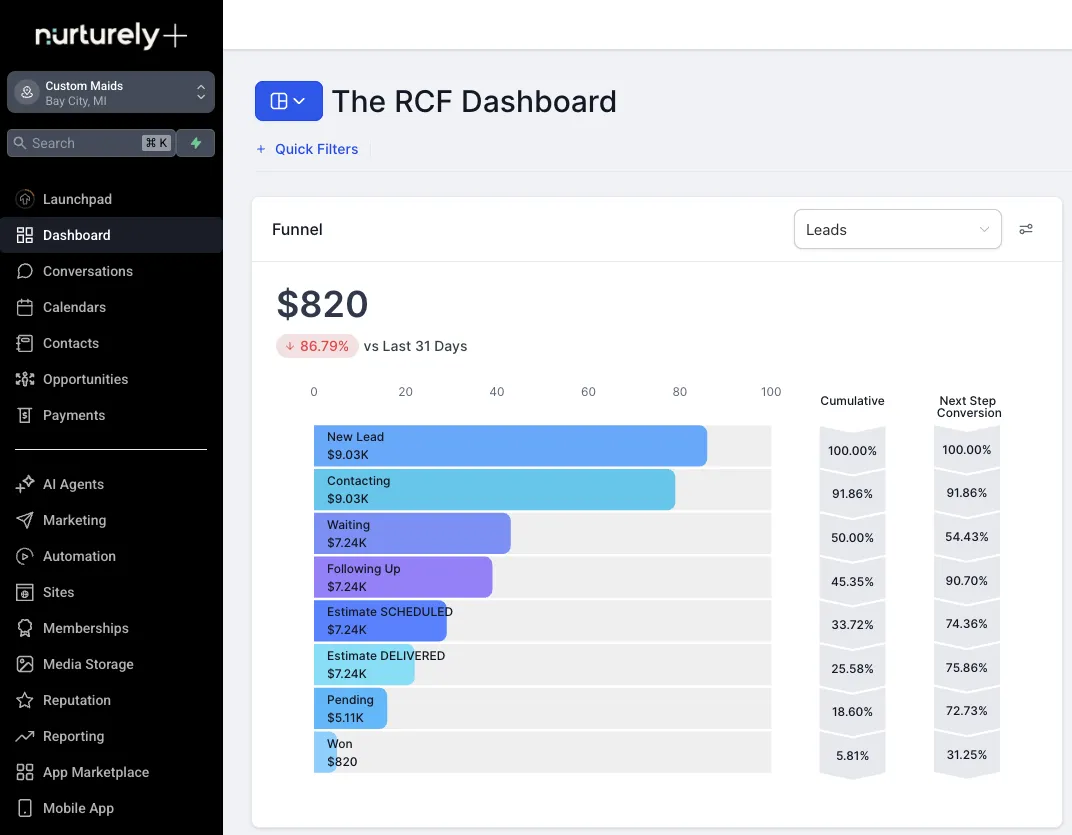Customer Feedback Collection System™
Customer Feedback Collection System™
A Complete Playbook for Building Trust, Maximizing Reviews, and Driving Growth

Why a Feedback System Matters
Customer reviews are no longer “nice to have.” They are decision drivers. A single glowing review can bring new customers through your door, while silence or negativity can push them toward competitors. Businesses that rely on random reviews or generic automation miss out on the power of a structured feedback system.
An intentional customer feedback collection system does three things:
Captures insights that improve your business.
Generates authentic reviews that build trust.
Creates sustainable momentum that compounds over time.
This playbook gives you the step-by-step system to set up a reliable, scalable review engine that protects and grows your reputation.
Step 1: System Foundation Setup
✅ Map the customer journey touchpoints
Identify every point of interaction: website, phone calls, check-in, service delivery, follow-up.
Rank them by emotional impact to pinpoint where feedback requests will be most effective.
Example: a salon’s peak moment may be the final reveal of a haircut; a contractor’s may be after a project walkthrough.
✅ Establish feedback tracking metrics (KPIs)
Response rate – % of customers who leave feedback after being asked.
Sentiment trends – % positive vs negative feedback over time.
Review volume – average reviews collected weekly/monthly.
Conversion lift – sales/revenue changes linked to reviews.
✅ Implement CRM integration
Log customer history, preferences, and interactions in a single system.
Personalize follow-ups (“Hi Sarah, we’re glad your AC was fixed today—mind sharing how it went?”).
Enables tracking of repeat customers and long-term loyalty trends.
Pro Tip: Without CRM integration, your system will feel transactional. With it, reviews feel personal, authentic, and high-converting.
Step 2: Staff Training & Empowerment
✅ Conduct psychology training sessions
Teach staff to recognize customer emotions: relief, gratitude, excitement.
Show how “golden moments” (post-satisfaction highs) are perfect for review requests.
✅ Create response guidelines
Scripts for positive reviews: amplify gratitude and encourage referrals.
Scripts for neutral reviews: acknowledge concerns, invite conversation.
Scripts for negative reviews: thank, empathize, and take it offline.
✅ Implement authority protocols
Empower staff to resolve common issues immediately (e.g., comp a small item, provide a courtesy service) without manager delays.
Removes friction and prevents small frustrations from becoming negative reviews.
Case Snapshot: A restaurant trained staff to comp small desserts when noticing dissatisfaction. Negative reviews mentioning “poor service” dropped by 40%.
Step 3: Technology Implementation
✅ Set up automated monitoring
Real-time review alerts (Google, Yelp, Facebook).
Social listening tools to track brand mentions.
Internal satisfaction surveys sent after key touchpoints.
✅ Create a multi-channel collection system
Email: convenient, especially with direct links.
SMS: higher response rate, perfect for immediate asks.
In-person: the highest conversion rate when timed right.
Printed cards/QR codes: physical reminders that extend the feedback window.
✅ Configure analytics dashboard
Visualize review trends by platform, staff member, or service line.
Spot dips early before they damage reputation.
Compare performance over time to measure growth.
Pro Tip: Technology doesn’t replace human connection—it amplifies it. Use automation to support, not replace, authentic asks.
Step 4: Review Request Optimization
✅ Identify golden moments
Restaurant: after meal satisfaction, during dessert delivery.
Retail: when a customer compliments product fit.
Healthcare: after a successful treatment or follow-up call.
Services: at project completion or after resolving a challenge.
✅ Create personalization templates
Reference specific experiences: “I’m glad we could help with your AC repair today—your review would help other homeowners.”
Always include a direct review link (remove friction).
✅ Establish follow-up sequences
Initial ask: at peak satisfaction.
Reminder 1: 24 hours later with direct link.
Reminder 2: 48–72 hours later with appreciation message.
Pro Tip: Never beg. Instead, frame it as helping others: “Your story could help another family choose with confidence.”
Step 5: Quality Control & Improvement
✅ Create a feedback analysis process
Categorize reviews into themes: service, product, staff, wait time.
Identify recurring issues.
Use sentiment analysis to spot shifts before they grow.
✅ Set up response monitoring
Track how quickly staff respond to reviews.
Measure professionalism, empathy, and resolution quality.
✅ Design improvement protocols
Convert negative themes into training opportunities.
Example: if “slow service” shows up 5+ times monthly, adjust scheduling or add training.
Case Snapshot: A retail chain reviewed monthly themes and discovered “long checkout lines” was the #1 issue. By adding 2 part-time cashiers, negative mentions dropped by 70%.
Step 6: Long-Term Sustainability
✅ Schedule regular system audits
Monthly: Review collection volume, response time, sentiment.
Quarterly: Test new request scripts and timing strategies.
Annually: Reevaluate tech stack, CRM integration, and review channels.
✅ Create an expansion strategy
Adapt to new platforms (voice reviews, video testimonials).
Stay ahead of Google’s algorithm updates for local SEO.
✅ Establish recognition programs
Celebrate staff who consistently earn positive mentions in reviews.
Reward behaviors that create review-worthy experiences.
Pro Tip: Publicly recognize staff for reviews that mention them by name—it encourages consistency and motivates others.
Master Checklist Recap
Map customer journey & identify touchpoints
Define KPIs (response rate, sentiment, review volume)
Integrate CRM for personalization
Train staff on psychology & emotional triggers
Create feedback response guidelines
Empower staff with authority protocols
Implement monitoring tools + alerts
Build multi-channel review collection
Launch analytics dashboard
Optimize timing of requests (golden moments)
Create personalized request templates
Automate follow-up sequences
Review and analyze feedback patterns
Track response speed and quality
Implement operational improvements
Conduct regular audits and strategy updates
Build recognition + reward programs
Final Word
A feedback system isn’t just about collecting reviews—it’s about creating a growth engine. Done right, it delivers:
Authentic, high-volume positive reviews.
Early-warning systems to prevent negative reviews.
Deeper trust with customers who feel heard and valued.
A competitive moat your rivals can’t easily replicate.
Your reputation is the most valuable asset your business owns. This system ensures it grows stronger with every interaction.



